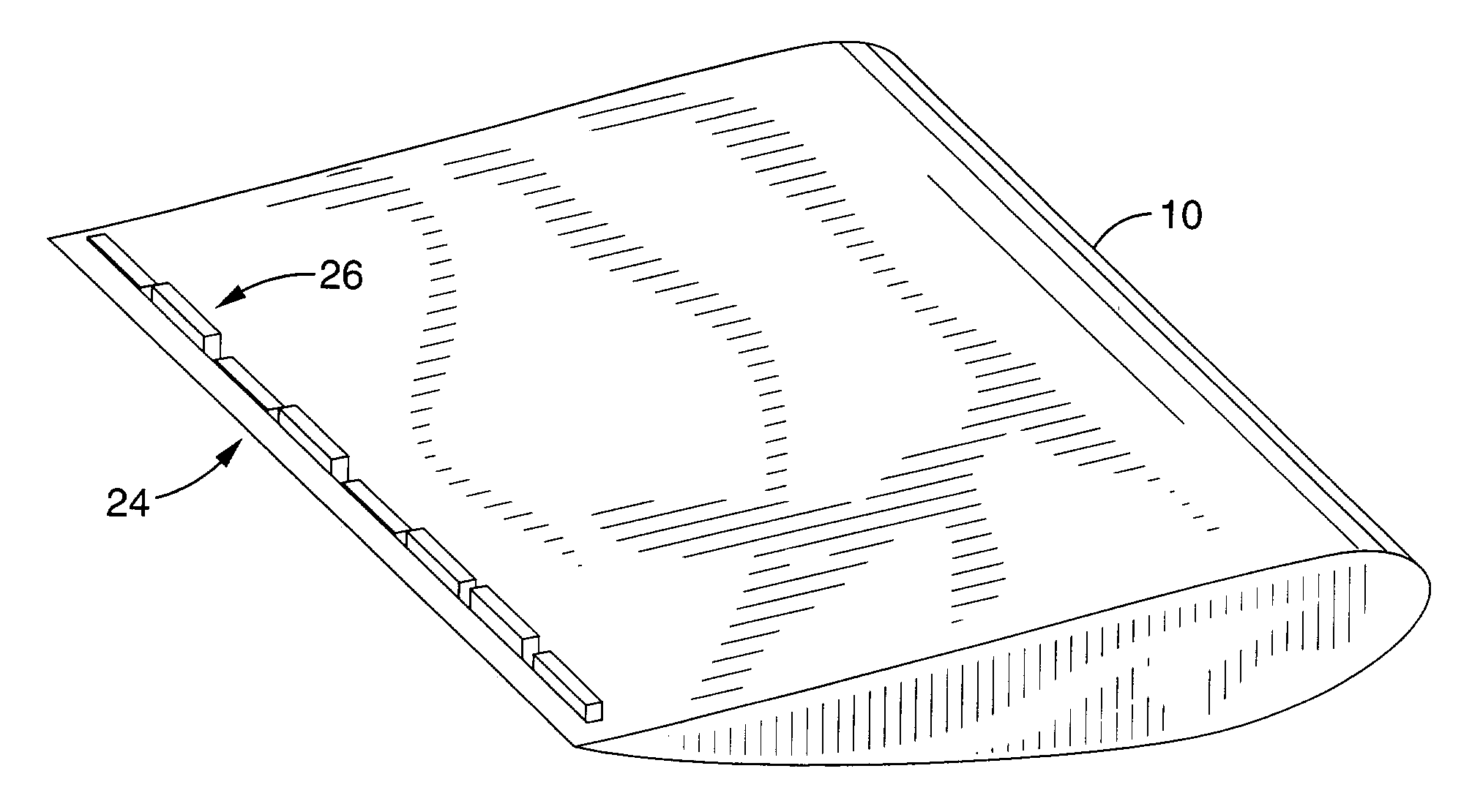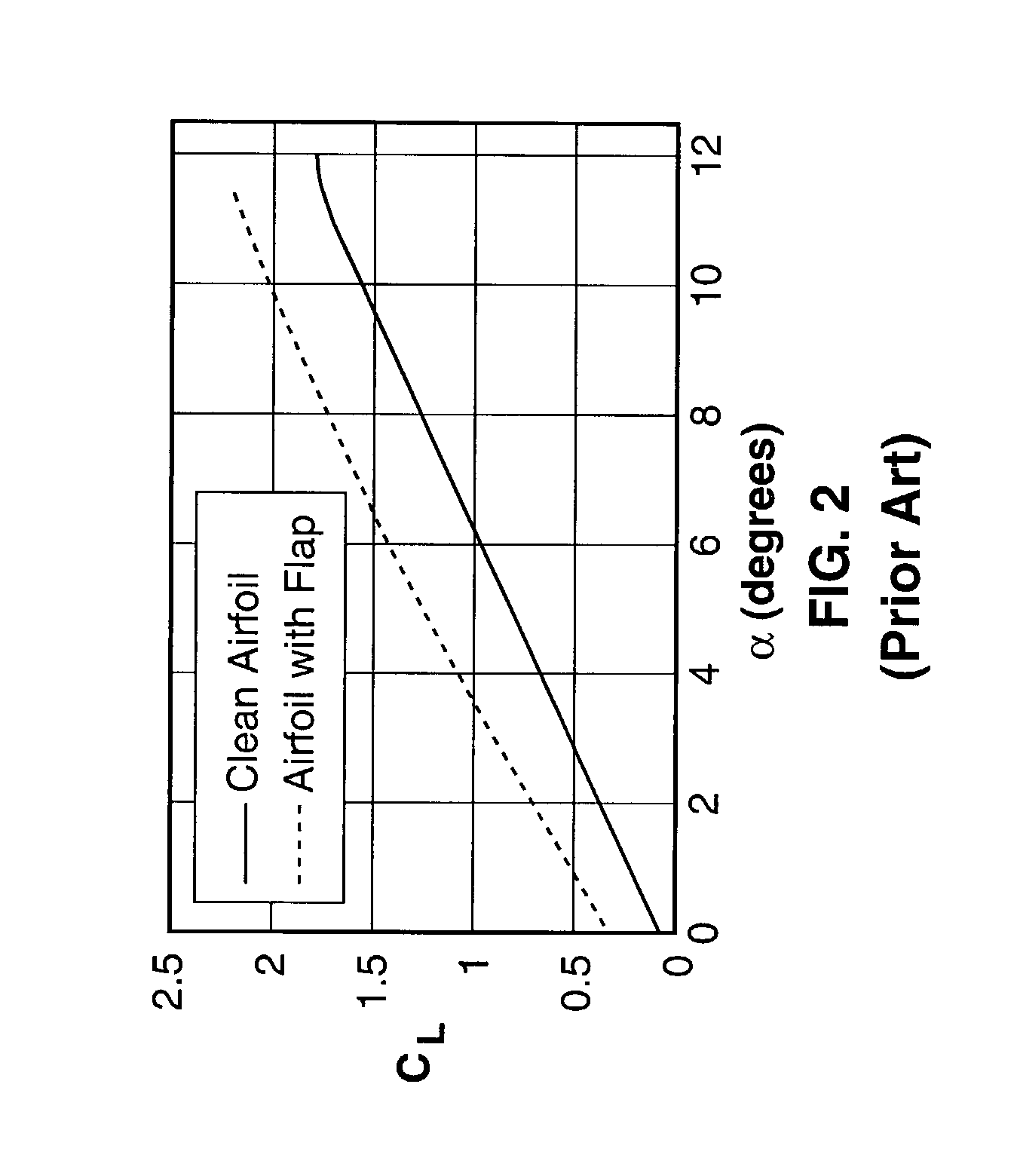Microfabricated translational stages for control of aerodynamic loading
a technology of translational stages and aerodynamic loading, which is applied in the direction of airflow influencers, machines/engines, instruments, etc., can solve the problems of complex systems for actuation and support, device prone to flutter, and bulky and heavy conventional aileron devices, etc., to reduce lift and reduce the camber effect of airfoil
- Summary
- Abstract
- Description
- Claims
- Application Information
AI Technical Summary
Benefits of technology
Problems solved by technology
Method used
Image
Examples
example
[0054]A GU25-5(11)-8 airfoil was chosen for testing, although numerous other airfoils could have been chosen as well. The GU25-5(11)-8 was selected for its larger trailing edge volume and nearly flat bottom surface. The thick trailing edge provides the volume needed to retract the translational elements. Also, the nearly flat lower surface makes it easy to install translational elements. The GU25-5(11)-8 airfoil was developed at the University of Glasgow as one of a series of high lift, low-drag airfoils.
[0055]Experiments were conducted using three, 12-inch chord, 33.5 inch span test airfoil models. One airfoil was used to perform validation tests and to develop a consistent data set for comparison and correction data. The other two GU-like airfoils were fitted with the translational stages. All experiments were conducted in the UC Davis Wind Tunnel Facility (UCD). The facility houses a low-turbulence wind tunnel with a 3×4 ft cross section and 12 ft in length test section built by ...
PUM
 Login to View More
Login to View More Abstract
Description
Claims
Application Information
 Login to View More
Login to View More - R&D
- Intellectual Property
- Life Sciences
- Materials
- Tech Scout
- Unparalleled Data Quality
- Higher Quality Content
- 60% Fewer Hallucinations
Browse by: Latest US Patents, China's latest patents, Technical Efficacy Thesaurus, Application Domain, Technology Topic, Popular Technical Reports.
© 2025 PatSnap. All rights reserved.Legal|Privacy policy|Modern Slavery Act Transparency Statement|Sitemap|About US| Contact US: help@patsnap.com



